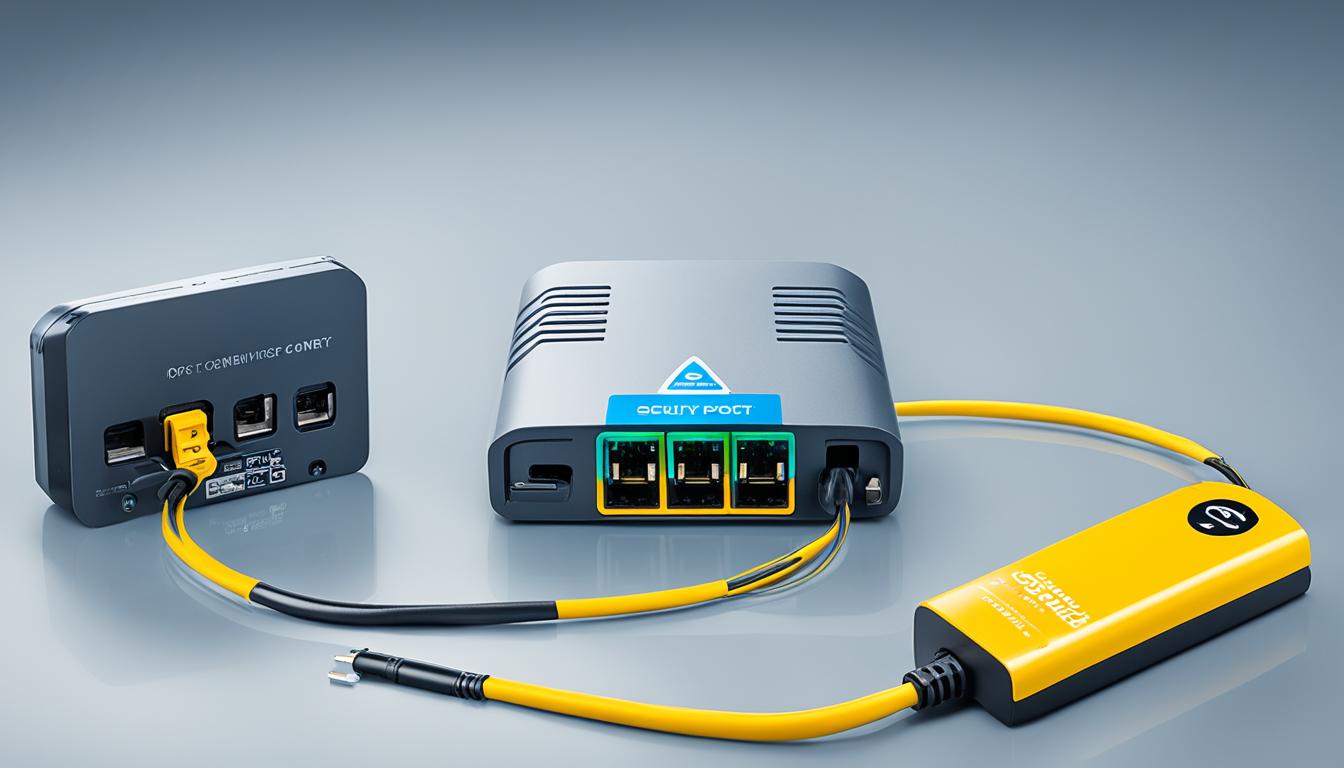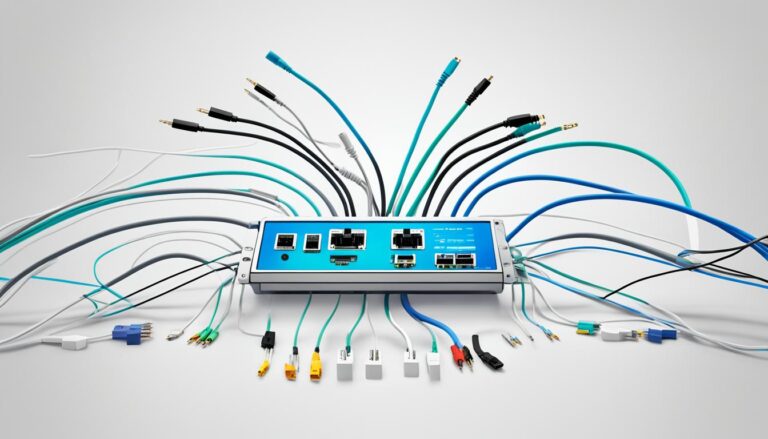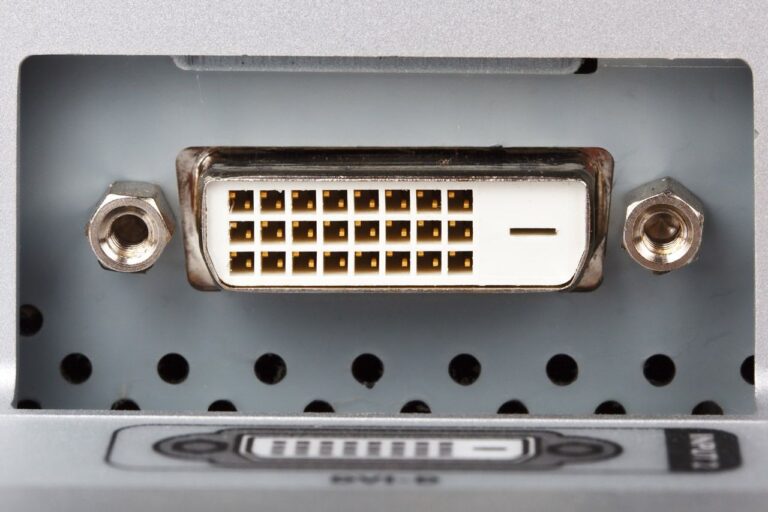Welcome to our Port Connect article. This solution helps ensure devices and networks connect securely and reliably. Today, with many cyber threats, keeping our connections safe and intact is more important than ever.
Port Connect provides a full solution focused on secure and reliable connections for businesses. It uses SSL (Secure Sockets Layer) certificates to secure online connections. These certificates are key for secure connections across various ports. This includes crucial ones like port 443 for HTTPS, port 587 for SMTP, and port 993 for IMAP.
By using SSL certificates, Port Connect does more than keep data private during transfer. It also checks the identity of websites. This ensures the data stays correct and untouched. With these secure connections and SSL certificates, firms can feel at ease. They protect their important info from being taken or tampered with.
We’ll now take a closer look at Port Connect, SSL certificates, and the importance of selecting the right ports. We’re exploring how Port Connect provides benefits for secure and dependable connections. Join us on this journey.
Understanding SSL Ports and Certificates
SSL ports, known as secured ports, help keep our online connections safe. They use SSL certificates to keep data private between servers and clients. This adds an extra security layer. So, organizations ensure their connections and data are well-protected.
Common SSL ports include:
- Port 443: Used for HTTPS (Hypertext Transfer Protocol Secure) connections. It’s key for safe web browsing. This port keeps data encrypted and safe during transmission.
- Port 587: Used for SMTP (Simple Mail Transfer Protocol) connections. It helps in sending emails securely and uses TLS (Transport Layer Security) to protect email information.
- Port 993: Used for IMAP (Internet Message Access Protocol) connections. It allows secure email fetching from a mail server, ensuring the data stays encrypted.
SSL certificates are crucial for website identity verification and securing connections. They help in protecting private info like personal and financial details. These certificates ensure the website you visit is legitimate and keeps data transmission safe.
SSL ports and certificates are key for secure online connections. They create safe channels for data, keeping privacy intact and blocking unauthorized access. Organizations need to use SSL ports and certificates to keep their connections safe and data protected.
| SSL Port | Protocol | Common Use |
|---|---|---|
| Port 443 | HTTPS | Secure web browsing |
| Port 587 | SMTP | Secure email submission |
| Port 993 | IMAP | Secure email retrieval |
By knowing about SSL ports and certificates, organizations can boost their security measures. They help protect data and secure online activities. Using SSL for web browsing, emails, or data fetching ensures a safe and trustworthy online experience.
TCP vs UDP: Choosing the Right Protocol
In the world of internet data transfer, two big names are TCP and UDP. Each plays a vital role in how data moves online. They have their unique points that fit different needs.
TCP:
Think of TCP as a careful messenger. It double-checks to make sure the data gets there in order, all pieces intact. This checking makes it great for when every bit of your data matters, like sending emails or files.
It’s not the fastest due to its thorough checking, but what it lacks in speed, it makes up in reliability. With TCP, you know your data will reach its destination just as you sent it.
“TCP’s connection-oriented nature allows it to provide reliable data transmission by verifying each packet’s successful delivery.”
UDP:
UDP, meanwhile, is the speedy delivery person who doesn’t wait to see if each package arrives. It skips the check-ins, making it much faster.
Its speed is perfect for live videos or online games where every second counts. Although it might drop some data along the way, the speed is worth it for the right applications.
“UDP’s connectionless nature enables faster transmission, making it suitable for real-time applications where speed is prioritized over data integrity.”
Your choice between TCP and UDP comes down to what you need more: reliability or speed. For important data that has to arrive whole and in order, go with TCP. If you’re after speed and can handle minor losses, UDP is better.
Comparison Between TCP and UDP
| TCP | UDP |
|---|---|
| Connection-oriented | Connectionless |
| Reliable data transmission | Speedy transmission |
| Establishes a secure communication line | No secure connection |
| Verifies data receipt | No verification of data receipt |
| Suitable for file transfers and email exchanges | Ideal for real-time applications and streaming |
Understanding TCP and UDP helps you choose wisely for your data needs. TCP is for when every piece of data is precious. UDP is for when speed trumps all. Your choice affects how well your data or services work.
SMTP Ports: Understanding the Different Options
SMTP (Simple Mail Transfer Protocol) helps us send emails over the internet. There are different ports for SMTP to keep emails safe. Let’s look at these SMTP ports and how they help in sending emails securely.
Default SMTP Port: Port 25
Port 25 is the basic port for SMTP. But ISPs often block port 25 to stop spam. Though used for sending emails, other ports offer better security and encryption.
Secure Email Submission: Port 587
Port 587 is best for sending emails safely. It uses TLS encryption, making sure emails go through the internet securely. This protects personal info and keeps email private.
SMTPS Deprecated: Port 465
Port 465 was for SMTPS (SMTP over SSL), offering encrypted email sending. Now, port 465 is not advised as it doesn’t meet RFC standards. Better to use port 587 for encryption and security.
Choosing the right SMTP port is key for safe emails. Whether for secure sending or general email tasks, the correct port keeps your emails private and safe.
| SMTP Port | Security | Recommended |
|---|---|---|
| Port 25 | Not secure | No |
| Port 587 | Secure (TLS encryption) | Yes |
| Port 465 | Deprecated (not RFC compliant) | No |
Other Commonly Used Ports
Apart from SSL and SMTP ports, other ports are vital for data transmission. They are key to keeping data secure and flowing smoothly. Let’s look at two main ones: HTTP and HTTPS.
HTTP (Port 80)
Port 80 is for web traffic without encryption, called HTTP. When you use HTTP, your data stays in plain text. This exposes sensitive info, like passwords or bank details, to potential theft.
HTTPS (Port 443)
Port 443 handles web traffic with encryption, named HTTPS. Accessing sites via HTTPS means your data is encrypted. This keeps your private details safe from intruders.
Some ISPs and hosting services may block certain ports for safety. Knowing about HTTP and HTTPS helps you choose the best way to send your data securely.
To show the difference between HTTP and HTTPS, here’s a table:
| Port | Protocol | Security |
|---|---|---|
| 80 | HTTP | Unencrypted |
| 443 | HTTPS | Encrypted |
So, port 80 deals with unencrypted HTTP traffic, and port 443 with encrypted HTTPS traffic. Selecting the right port, based on the security you need, is vital to protect your data.
It’s key to understand these ports to keep connections secure and dependable. Next, we’ll discuss how to choose the right port for your needs and why security is important.
Choosing the Right Port for Your Needs
Choosing the right port for your needs is very important. You need to think about what you require and the security available. The port you choose affects how safe and reliable your connections are.
If you need to send secure emails, port 587 is the best. It uses TLS encryption to keep your emails safe while they’re being sent. By choosing port 587, you make sure your emails are sent securely and encrypted, protecting your information.
For browsing the web and other data transmission, choosing the right port is key for security and encryption. Different ports have different levels of security. Knowing what each port does helps keep your connections safe and reliable.
Understanding the functionalities and limitations of different ports
Here are some common ports and what they’re used for:
- Port 80: This port is for unencrypted web traffic, also known as HTTP. It sends data in plain text, without any encryption or security.
- Port 443: This port, on the other hand, is for encrypted web traffic, known as HTTPS. It encrypts the data sent between the client and server to ensure privacy and security.
These examples show how important it is to choose the right port for what you need. Picking the right port helps keep your data safe and secure.
Choosing the best port means looking at what you need, the security offered, and picking one that matches your needs. By making smart choices and focusing on security, you can have safe and reliable connections for your devices and networks.
Conclusion
Port Connect gives you everything needed for safe and stable device and network connections. It uses SSL ports and certificates to keep data safe. This makes sure connections stay secure.
It helps secure emails with TLS encryption. It also sets up secure web connections using HTTPS. Port Connect has all the tools and rules needed to protect important information.
To choose the best way to connect, knowing about different ports, rules, and safety steps is key. This knowledge helps use Port Connect well. With it, you can keep device and network connections safe and reliable.
FAQ
What is Port Connect?
Port Connect focuses on giving reliable and secure connections for devices and networks. It ensures your devices stay connected safely.
How does Port Connect ensure data security?
It uses SSL certificates to keep internet connections safe and secure your data.
What are SSL ports?
SSL ports, known as secured ports, show if a connection is safe using SSL certificates.
What are some common SSL ports?
Common SSL ports are port 443 for HTTPS, port 587 for SMTP, and port 993 for IMAP. These ports help keep connections secure.
What is the role of SSL certificates?
SSL certificates check website identities and allow for safe connections. They keep your data private and intact.
What are TCP and UDP?
TCP and UDP are two protocols for internet data sending. TCP is for reliable sending, and UDP is for quick sending.
How does TCP ensure reliable data transmission?
TCP creates a secure line for talks and checks that data is received properly. It helps ensure your communication is reliable.
What is the difference between TCP and UDP?
TCP ensures every piece of data reaches its destination but is a bit slow. UDP is quick, but some data might get lost.
Which ports are associated with SMTP for secure email transfers?
For secure emails, port 587 is suggested as it supports TLS encryption. It helps keep your emails safe.
What are the commonly used ports for web traffic?
Port 80 is for HTTP, which is not encrypted. Port 443 is for HTTPS, offering encrypted web traffic.
How should I choose the right port for my needs?
Think about what you need and the security available. That way, you can pick the most suitable port.












